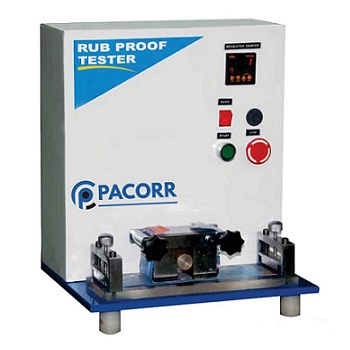A rub resistance tester can be used to test a wide range of materials, coatings, and surfaces to assess their resistance to rubbing, scratching, or other forms of abrasion. Here are some of the types of materials commonly tested using a rub resistance tester:
-
Printed Materials:
- Labels, packaging materials, printed graphics, and other surfaces with inks or coatings.
-
Coatings and Finishes:
- Paints, varnishes, lacquers, and other protective or decorative coatings applied to surfaces.
-
Plastics and Polymers:
- Surfaces made of various types of plastics and polymers, including films, sheets, and molded parts.
-
Textiles and Fabrics:
- Clothing, upholstery, carpets, and other textile materials to assess their resistance to wear.
-
Metals:
- Coated or finished metal surfaces, such as automotive trim, appliances, and industrial components.
-
Wood and Wood Products:
- Varnished or finished wood surfaces, furniture, cabinetry, and flooring materials.
-
Glass and Ceramics:
- Glass surfaces with coatings or decorative prints, ceramic tiles, and similar materials.
-
Leather and Synthetic Leather:
- Leather goods like bags, footwear, and furniture, as well as synthetic leather materials.
-
Paper and Cardboard:
- Printed materials, packaging, and labels made from paper or cardboard.
-
Rubber and Elastomers:
- Rubberized surfaces, gaskets, seals, and other elastomeric materials.
-
Electronics and Displays:
- Screens, displays, and touch-sensitive surfaces on electronic devices that may be subjected to rubbing.
-
Automotive Interiors:
- Upholstery fabrics, dashboard materials, trims, and other interior components.
-
Cosmetics and Personal Care Products:
- Packaging materials for cosmetics, skincare, and personal care products.
-
Medical Devices and Healthcare Products:
- Labels, packaging, and coatings on medical devices that may come into contact with other surfaces.
-
Footwear and Footwear Components:
- Shoe uppers, soles, and finishes, as well as components like laces and straps.
These are just some examples, and the versatility of rub resistance testers allows for testing a wide array of materials across various industries. The specific testing parameters and procedures may vary depending on the material and the intended application.


